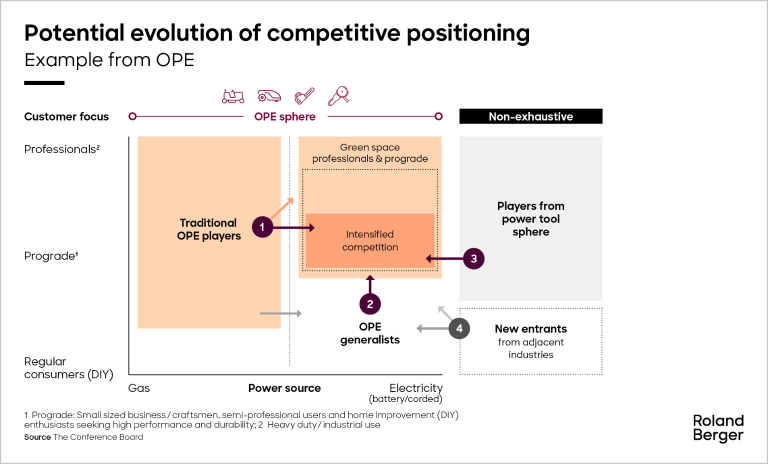B2B sales pose a growing challenge for capital goods companies.


Leading the transition: A critical agenda for power tool/OPE companies
By Sven Siepen, Steffen Thiel and Stefan Krieger
Roland Berger Power Tool/OPE Report 2024
After several years of strong growth, the power tool and outdoor power equipment (OPE) industry has reached a turning point. In 2023, nearly all major players reported a decline in top-line growth due to post-pandemic market corrections. Increased margin pressure has shifted the focus toward cost reduction initiatives, yet the hoped-for recovery has not materialized in the first half of 2024. Looking ahead, Roland Berger sees the industry at a crossroads. Some companies risk losing their market dominance, while others are capitalizing on momentum to drive transformation. We recommend a proactive approach to future positioning, balancing cost reductions with transformation and growth initiatives.

"2023 saw the power tools market settle back to typical levels after a period of unusually high demand. "
Top lines under pressure – and new priorities
Power tool/OPE players saw an average decline of around five percent in 2023 compared to the previous year. During COVID-19, many home improvement enthusiasts bought tools or other equipment earlier than they would have otherwise done, making a drop in sales after the pandemic inevitable. This was exacerbated by distributors reducing their stock levels by an average of 17 percent or so in 2023. In response, the majority of companies launched cost efficiency programs – although these efforts have not been able to stem an overall decline in EBIT margin of around one percentage point year-on-year in 2023.
With most players focusing on costs, it would be tempting to overlook other key areas requiring management attention, from cross-regional expansion and competitive landscape over battery platforms to changes in the global supply chain and the digitalization of the sales process. The industry is on the cusp of a major transition in terms of technology, strategy and competition, and we recommend that players balance any cost-related measures with strategies aimed at bolstering their future positioning. They must also ensure that they have sufficient cash reserves to navigate the transition and fund any new growth efforts.
A market in motion
North America is the biggest market for power tools/OPE and is likely to remain so. Recently, we have seen an uptick in activity by North American brands entering the European market, attracted by opportunities in specialized trades and advanced battery-powered segments. This is putting increased pressure on European-based players to defend their market positions at home, while looking for new opportunities abroad – although their efforts in the challenging North American market have yielded mixed results in the past. Emerging markets are another possible area for expansion, and these markets could end up driving growth in the overall industry.
An increasing number of players are expected to rally around the professional and "prograde" segments, significantly shaping the future competitive landscape. Currently, we are seeing players pushing into advanced and specialized customer segments, with the OPE sphere being a prime example of this convergence, involving traditional OPE companies, generalists, and players originally from the power tool sector. To succeed, companies need a clear target vision and a robust strategy; simply converting products from gas to battery is not enough. Indeed, many traditional players will rely on both types of devices in their offering during the period of transformation.
Outlook for 2024 and beyond
We expect the power tools/OPE market to remain sluggish in 2024, with negative growth rates persisting in some areas and regions. However, signs of recovery may appear in 2025, with a promising midterm growth trajectory of 3-5%. In the coming years, transformation will be the name of the game. We anticipate several trends gaining relevance, including the adoption of new selling principles, the increased dominance of ecosystem-tailored solutions, the spread of AI-supported product features and business processes, the rise of robotics-enabled and augmented reality applications, and the emergence of solutions for climate-resilient cities and water scarcity. For companies, a crucial task will be defining their positioning inside a future target picture. Doing so will enable them to lead the process of transition – rather than floundering in its wake.
The second annual Roland Berger power tools/OPE industry report provides insights into how the industry is developing from a top-line and profitability perspective, along with selected perspectives on dominant industry dynamics. The material is based on our proprietary market analysis and market models, combined with public sources and a wide range of interactions with industry experts across different regions and segments.
Register now to access the full study, to explore challenges and opportunities in the power tool industry amid revenue declines and battery-powered device transition.








